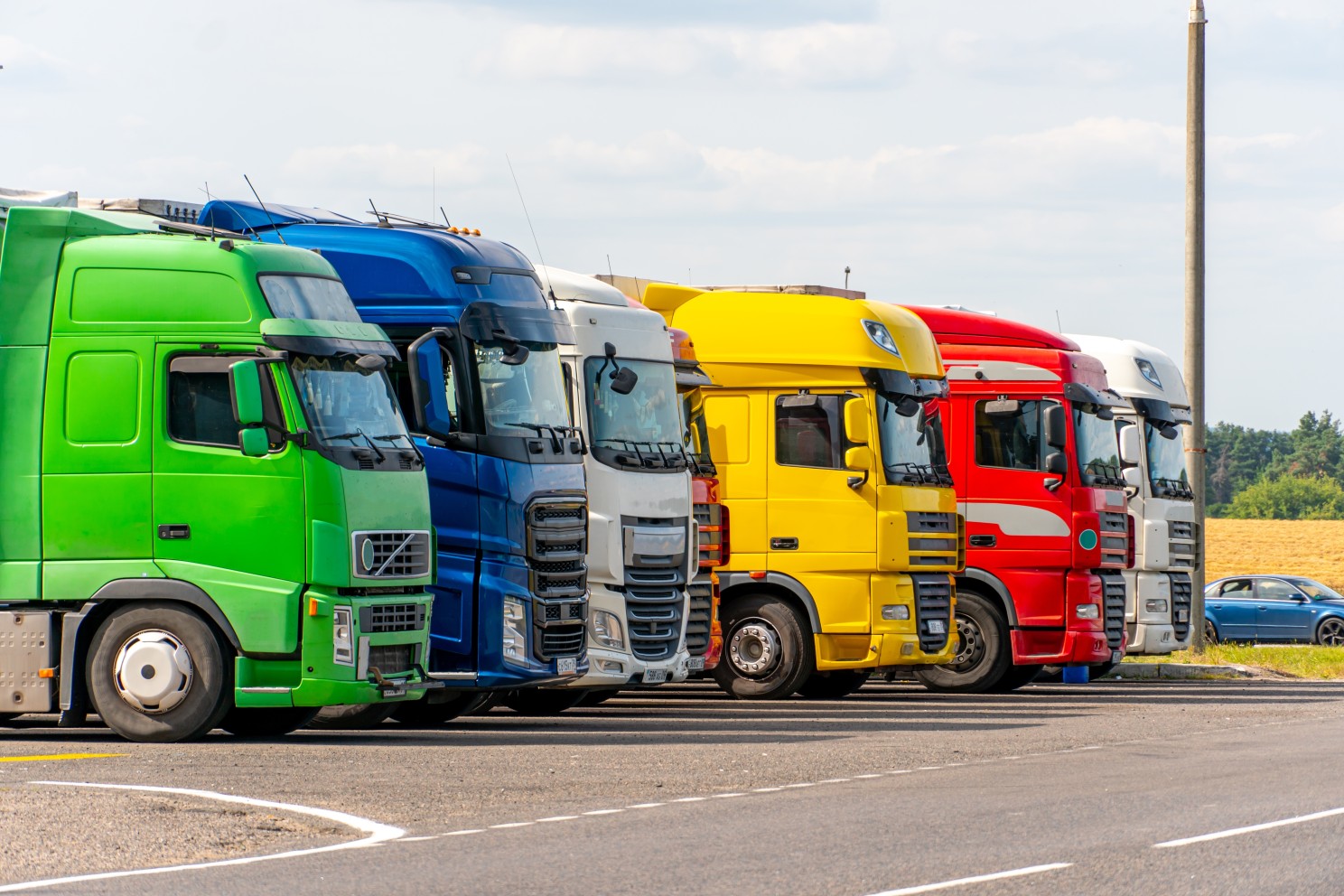
Susie Jones
Sådan tackler du mangfoldigheden af chauffører i branchen
Oprettet: 21.08.2024
•
Opdateret: 21.08.2024
Hvis vi bad dig om at beskrive en lastbilchauffør, ville dit svar måske give et stereotypt billede af en ældre, hvid mand. Er det korrekt? Traditionelt har lastbilbranchen været mandsdomineret. I årenes løb er branchen blevet mere mangfoldig og har åbnet muligheder for, at kvinder, folk i forskellige aldre og med forskellige baggrunde kan komme ind på området. Mangfoldigheden vokser, men eksterne udfordringer som Brexit og pandemien har stunet dette.
Kvinder i branchen
På trods af en mangel på op til 100.000 HGV-chauffører i Storbritannien er kun 1 % til 3 % af lastbilchaufførerne kvinder. Så hvorfor er der ikke flere kvinder, der melder sig til livet på landevejen?
Sikkerhed: Det anslås, at [60 %] (https://www.businessinsider.com/female-truckers-describe-how-to-stay-safe-trucker-shortage-2022-2?r=US&IR=T) af de kvindelige lastbilchauffører har følt sig utrygge på jobbet. Mange har udtrykt behov for at parkere i lyskryds, planlægge deres stop og bære peberspray.
Teknik og udstyr: Ergonomisk set er lastbiler bygget til mænd. Tidligere har kvinder fundet det hæmmende at række ud efter betjeningselementer, justere sæder og de fysiske aspekter af jobbet. Men teknologiske fremskridt betyder, at fysisk anstrengelse ikke er et problem. De fleste moderne lastbiler har nu servostyring og automatiske gearkasser for at gøre tingene lettere.
På trods af disse tilbageslag lader kvinderne deres stemmer høre og gennemtvinger ændringer i branchen. Chauffører som [Jodi Smith] (https://www.instagram.com/pinktrucker90/?hl=en) er uvurderlige fortalere for branchen. Jodi deler sine erfaringer med lastbilkørsel online og beviser, at denne branche ikke kun er en mandeverden.
"Lastbilkørsel er ikke et mandejob - jeg kan udføre dette job med et helt sæt akrylfarver! Det er ret fysisk, men det er ikke hårdt", sagde Jodi, da [vi talte med hende tilbage i 2021] (https://fleetpoint.org/driver-training-safety/driver-safety-2/are-women-the-future-of-trucking/). Med syv års erfaring i bagagen fortsætter Jodi med at arbejde for, at flere kvinder kommer ind i lastbilbranchen.
Et resultat, der kan føre til sikrere veje - American Transportation Research Institute data viser, at kvinder er sikrere erhvervschauffører. Mandlige chauffører har 20 % større risiko for at blive involveret i en ulykke sammenlignet med deres kvindelige kolleger.

Aldersdiversitet i branchen
Ifølge Office of National Statistics er gennemsnitsalderen for en HGV-chauffør 48 år, og 47 % af lastbilchaufførerne i Storbritannien er over 50 år og ønsker snart at gå på pension. Disse statistikker og den aktuelle chaufførmangel tyder på, at der er behov for yngre chauffører i branchen.
Det er lettere sagt end gjort; mange unge bilister står over for følgende udfordringer:
Uddannelse: At få et erhvervskørekort kan koste op til £2.000
Forsikring: Selvom minimumsalderen for at køre lastbil i Storbritannien er 18 år, kæmper mange med at få en forsikring.
Erfaring: Nogle virksomheder ønsker at ansætte erfarne chauffører, hvilket kan være et tilbageslag.
Betingelser: Lastbilchaufførers liv kan være krævende - lange arbejdsdage og tid væk fra dem, man holder af, kan virke afskrækkende. Men der er mange fordele ved livet på landevejen, f.eks. fællesskab, rejser, løn og jobstabilitet.

Virksomheder, der er på udkig efter chauffører, kan drage fordel af at ansætte yngre lastbilchauffører. De er mere tilbøjelige til at tilpasse sig en branche i konstant forandring. Desuden er de hurtige til at lære, og de hilser teknologiske fremskridt velkommen. En stigning i antallet af yngre chauffører i branchen vil resultere i lavere omsætningshastighed og dermed reducere virksomhedernes omkostninger. Det vil også sikre, at branchen kan imødekomme den voksende efterspørgsel efter varer og tjenesteydelser.
Men hvad er ulemperne for dig, hvis du er en ældre bilist? Noget tyder på, at alderen påvirker de fysiske og kognitive evner og dermed evnen til at køre sikkert. Det er afgørende for lastbilchauffører, som skal håndtere lange arbejdsdage, fysiske krav og stressede situationer.
FMCSA har taget hånd om disse bekymringer. Reglerne kræver, at ældre chauffører skal gennemgå hyppige lægeundersøgelser og kørselsevalueringer. For nylig blev det rapporteret, at en [90-årig lastbilchauffør] (https://www.bbc.co.uk/news/uk-england-south-yorkshire-64223431) fra Sheffield stadig kørte lastbil efter at have fået en ren helbredsattest. Mange hævder, at ældre chauffører har årtiers erfaring og viden med sig - hvilket tyder på, at hvis de er sunde og raske, bør der ikke være nogen hindring for ansættelse.
Hvordan kan mangfoldighed løse den nuværende mangel på chauffører?
I 2022 gav Office for Veterans' Affairs 100.000 pund til velgørenhedsorganisationen Veterans into Logistics. Velgørenhedsorganisationen giver veteraner mulighed for at blive lastbilchauffører. Finansieringen har gjort det muligt for organisationen at øge sin årlige uddannelse betydeligt, øge antallet af medarbejdere og tredoble den tilgængelige uddannelse. XPO, ASDA og Muller Milk & Ingredients er alle virksomheder, der aktivt ansætter veteraner direkte efter uddannelsen.
Derudover gav ASDA 40.000 pund til at hjælpe med videreuddannelse. Støtte til velgørenhedsorganisationer som Veterans into Logistics skaber en mere mangfoldig kultur inden for lastbilkørsel, samtidig med at man aktivt tackler den aktuelle mangel på chauffører.
Hvad kan man gøre for at tiltrække mere mangfoldighed?
En mangfoldig arbejdsstyrke åbner virksomhederne for forskellige synspunkter og erfaringer. Hvad kan virksomheder gøre for at tiltrække en mangfoldig arbejdsstyrke?
Invester i uddannelse: Uddannelse af medarbejdere i emner som implicitte fordomme, inklusion på arbejdspladsen, forebyggelse af diskrimination, og hvordan man støtter en mangfoldig arbejdsstyrke, kan have en positiv effekt.
Invester i en inkluderende ansættelsesproces: Anonymisering af en kandidats CV kan reducere ubevidst bias.
Fremme en inkluderende kultur: Fortæl potentielle kandidater, hvordan du håndterer aktuelle problemer med mangfoldighed og inklusion.
Nå ud til underrepræsenterede grupper i denne branche.
At fremme og byde velkommen til en mangfoldig kultur inden for lastbilkørsel kan være til stor gavn for branchen. Ikke alene vil det bidrage til at skabe et mere inkluderende og indbydende arbejdsmiljø, men det vil også hjælpe med den igangværende chaufførmangel. Vognmandsvirksomheder har et lige så stort ansvar for at omfavne mangfoldighed som vognmænd.

Hvilket land efterspørger lastbilchauffører?
En rapport, der blev offentliggjort i december 2022, viste, at manglen på chauffører i Europa var steget med 42 % fra 2020 til 2021. Storbritannien lå i top med 100.000 ledige chaufførstillinger. Mexico og Kina lå også højt på listen, hvor Mexicos mangel steg med 30 %, og Kinas steg til svimlende 140 %.
Har vi brug for lastbilchauffører i fremtiden?
Introduktionen af selvkørende lastbiler har fået mange til at mene, at der ikke er nogen fremtid for lastbilchauffører. Men det er langt fra tilfældet.
Selvkørende lastbiler vil blive indført gradvist i bestemte regioner. Sandsynligheden for, at det vil påvirke de fleste chauffører, er lille.
Hvis selvkørende lastbiler blev indført i hele verden, ville der stadig være brug for chauffører. Efterspørgslen efter lastbilchauffører vil kun stige, da der er for mange ting, der kan ske, hvis der ikke er en chauffør i førerhuset.
Hvad er lastbilchaufførers stereotyper?
Vi ved, hvor vigtige lastbilchauffører er, men i nogle få menneskers øjne er der stadig negative stereotyper forbundet med branchen - dette billede kan skyldes mediernes forkerte fremstilling og nogle gange nogle få uerfarne chauffører. Men hvad er dette stereotype billede? Og hvorfor er det forkert?
Overvægt - Nogle rastepladser tilbyder usund fastfood, som kan give dig det indtryk, at lastbilchauffører kun spiser det. Men det er bestemt ikke normen. Det kan være en udfordring at spise sundt på farten, men mange holder sig til en velafbalanceret kost og dyrker regelmæssig motion. Se vores tips til [at spise sundt på landevejen] (https://www.linkedin.com/pulse/how-healthy-truck-driver-snap-account/?trackingId=g91E6xbfIMoJTora4dSipQ%3D%3D).
Dårlige chauffører - en stereotyp, der ikke kunne være længere fra sandheden. Professionelle lastbilchauffører tager sikkerhed ekstremt alvorligt. De overholder ofte hastighedsgrænsen, er ekstra forsigtige i dårligt vejr og giver masser af plads mellem sig selv og andre chauffører.
Grov i munden - Vi bliver alle vrede i trafikken, og lastbilchauffører er ingen undtagelse. Men det er uretfærdigt at lægge denne stereotype udelukkende på lastbilchauffører.
Alle lastbilchauffører er mænd - Der er flere mænd end kvinder i denne branche, men antallet af kvindelige lastbilchauffører er stigende.



